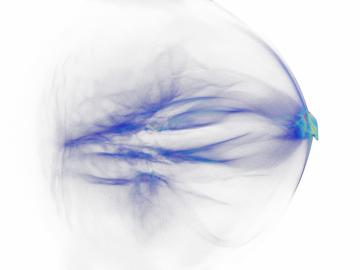
Filter News
Area of Research
- (-) Sensors and Controls (2)
- (-) Supercomputing (153)
- Advanced Manufacturing (5)
- Biological Systems (1)
- Biology and Environment (102)
- Biology and Soft Matter (4)
- Building Technologies (2)
- Chemical and Engineering Materials (3)
- Chemistry and Physics at Interfaces (7)
- Clean Energy (168)
- Climate and Environmental Systems (7)
- Computational Biology (1)
- Computational Chemistry (5)
- Computational Engineering (1)
- Computer Science (3)
- Data (1)
- Earth Sciences (1)
- Electricity and Smart Grid (1)
- Energy Frontier Research Centers (7)
- Fuel Cycle Science and Technology (2)
- Functional Materials for Energy (8)
- Fusion and Fission (32)
- Fusion Energy (7)
- Geographic Information Science and Technology (1)
- Isotopes (21)
- Materials (122)
- Materials for Computing (13)
- Materials Synthesis from Atoms to Systems (8)
- Materials Under Extremes (7)
- National Security (45)
- Neutron Data Analysis and Visualization (2)
- Neutron Science (72)
- Nuclear Science and Technology (27)
- Quantum Condensed Matter (3)
- Quantum information Science (4)
- Renewable Energy (2)
- Transportation Systems (4)
News Type
News Topics
- 3-D Printing/Advanced Manufacturing (2)
- Artificial Intelligence (21)
- Big Data (13)
- Bioenergy (3)
- Biology (6)
- Biomedical (7)
- Biotechnology (1)
- Buildings (2)
- Chemical Sciences (1)
- Climate Change (12)
- Computer Science (45)
- Coronavirus (7)
- Cybersecurity (2)
- Decarbonization (3)
- Energy Storage (1)
- Environment (13)
- Exascale Computing (12)
- Frontier (13)
- Grid (1)
- High-Performance Computing (20)
- Machine Learning (7)
- Materials (4)
- Materials Science (8)
- Mathematics (1)
- Microscopy (2)
- Nanotechnology (5)
- National Security (3)
- Net Zero (1)
- Neutron Science (6)
- Nuclear Energy (2)
- Physics (3)
- Quantum Computing (10)
- Quantum Science (10)
- Security (1)
- Simulation (10)
- Software (1)
- Space Exploration (1)
- Summit (21)
- Sustainable Energy (3)
- Transportation (3)
Media Contacts

Scientists at the Department of Energy’s Oak Ridge National Laboratory are working to understand both the complex nature of uranium and the various oxide forms it can take during processing steps that might occur throughout the nuclear fuel cycle.

Using artificial neural networks designed to emulate the inner workings of the human brain, deep-learning algorithms deftly peruse and analyze large quantities of data. Applying this technique to science problems can help unearth historically elusive solutions.
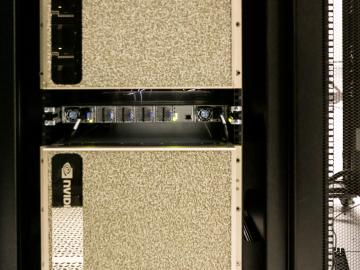
As home to three top-ranked supercomputers of the last decade, the US Department of Energy’s (DOE’s) Oak Ridge National Laboratory (ORNL) has become synonymous with scientific computing at the largest scales. Getting the most out of these science machines, however, requires a w...

By analyzing a pattern formed by the intersection of two beams of light, researchers can capture elusive details regarding the behavior of mysterious phenomena such as gravitational waves. Creating and precisely measuring these interference patterns would not be possible without instruments called interferometers.

Philip Bingham has two pieces of advice for researchers new to Oak Ridge National Laboratory: (1) develop a skill set that can be applied to multiple research areas, and (2) get out and meet folks across the lab. “The favorite part of my work is that I’ve done a lot of very diffe...
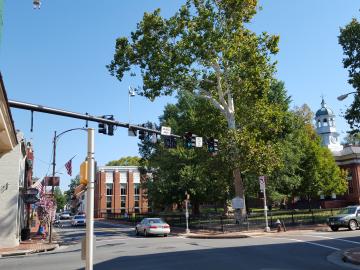
In a project leveraging computer vision, machine learning, and sensors, Oak Ridge National Laboratory scientists are working with private company GRIDSMART Technologies, Inc. to demonstrate how stop lights can be programmed to improve fuel economy and reduce emissions.
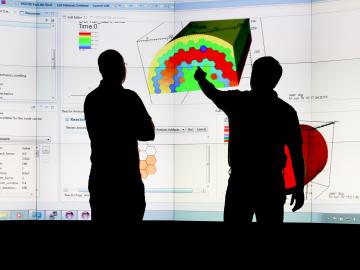

Long-haul tractor trailers, often referred to as “18-wheelers,” transport everything from household goods to supermarket foodstuffs across the United States every year. According to the Bureau of Transportation Statistics, these trucks moved more than 10 billion tons of goods—70.6 ...
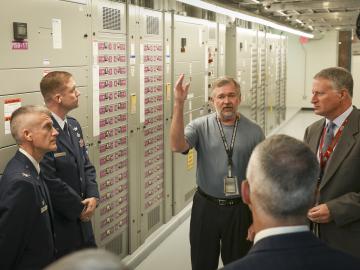
For the US military, accurate weather prediction is vital to both the planning and execution of worldwide missions. To extend its weather modeling capabilities, the US Air Force has joined the computing experts at the US Department of Energy’s (DOE’s) Oak Ridge National Laborato...
